#space marine biology
Text
I was talking on Discord a bit ago (as one does) about whether Space Marines are a separate species from humans (not really), but then thinking about it later, about what the fuck they are biologically -- they’re parasites, of course.
Or at least, their gene-seed is.
Each Legion’s gene-seed is an asexually reproducing lineage that uses a combination of social and biological manipulation to force its human hosts to reproduce and spread it, both inside their human bodies and in the labs of the Apothecarion.
“Parasite” is a bit of of a value judgement, of course. The Space Marines themselves, if they didn’t find the whole discussion heretical and blasphemous, would probably describe the relationship as mutualistic. They benefit immensely! They’re bigger, stronger, more durable, and live longer (if no one kills them)!
(And if they don’t die in the implantation process, of course. A roughly 90% death rate is a helluva fitness cost on both the human hosts and the space marine gene-seed.)
But... the gene-seed also seems to sterilize them[1], and that caries a lot more weight in biology than physical strength or longevity on its own. Space marines’ enhanced bodies don’t work to reproduce human children; instead they grow new gene-seed to implant into more humans.
That’s a little reductive for a social species, of course. Sure, humans with gene-seed implanted into them don’t reproduce directly, but surely they increase the survival and reproduction of other humans sufficiently to make up for it!
Which may be true in canon [2] and is more defensible as a biological argument than as a moral one. [3]
But given that (a) space marine gene-seed carries its own genetic code which (b) it requires the help of its human host and his community to reproduce (c) at the direct expense of the human host’s own life (most of the time) and reproduction (nearly always)... yeah, I think parasite is accurate.
[1] Canon’s not entirely consistent here, but certainly Space Marines rarely if ever have biological children.
[2] Hard to measure that sort of thing in a fictional universe with wildly varying made-up population numbers.
[3] Do the numbers add up? Who knows, maybe. Does this justify anything the Imperium is doing? Whole different question, and no.
#space marine biology#warhammer 40k meta#gene-seed the Canine transmissible venereal tumor of the 30th/40th millennium#parasites#yeah still kinking on these guys
38 notes
·
View notes
Text
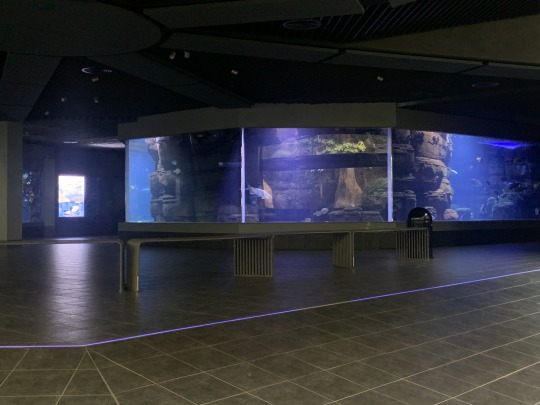
Berlin, September 2023
#Berlin#Zoologische Garten#Zoo#Aquarium#marine biology#Aqua#water#fish#Germany#liminal#liminalcore#liminal space#liminal spaces#backrooms#the backrooms
468 notes
·
View notes
Text
Wet Beast Wednesday: tardigrades
Last week on Wet Beast Wednesday I covered the largest animals to ever exist on our planet. This week I'm going to pull a full 180 and cover the smallest animals yet on this series. Meet the tardigrade, the internet's favorite micro-animal the is said to be basically immortal. How true is that? Let's see.

(Image: an electron microscope image of a tardigrade. It looks a lot like a potato with eight stubby legs tipped with long claws. At the front is a small, circular mouth. It has no other discernable features. In the background are bits of plant matter that look like seaweed at this scale. End ID)
The tardigrades are 1,300 known species (and probably a lot of unknown ones too) in the phylum Tardigrada. They are also part of the superphylum Ecdysozoa, which are animals that grow by molting their outer cuticles or exoskeletons. In particular, the tardigrades are believed to be a sister group of the arthropods, the group that contains crustaceans, insects, isopods, and a lot of other things. Tardigrades are truly tiny, the largest species reaching a whopping 1.5 millimeters in length, though most species reach no more than 0.5 mm. They have round, segmented bodies with four pairs of legs that end in either claws or suction discs. The body segments consist of a head, three body segments with a pair of legs each, and a caudal segment with the final pair of legs. The first three legs are used for movement while the final pair points backwards and is used for grabbing onto substrate. All of the body segments except for the final one correspond to segments found in the head section of insects. Tardigrades are missing many hox genes, genes that direct the body plan during development. Their ancestors may have had a body plan more similar to insects, but the loss of the hox genes has compressed them into walking heads with a bit of butt. The mouth is tubular and sucks in food. In the mouth are stylets, needle-like structures used to pierce food objects. Once food is drawn into the mouth, a structure called the buccopharyngeal apparatus activates. This is a combination of spines and muscle that acts like an inner jaw that pulls food into the digestive tract. The buccopharyngeal apparatus is distinct enough to be used as a major identifying feature between species. Tardigrades are translucent and many images you've seen of them have false color to show the details or are 3D models based on scanning electron microscope imagery of them. Tardigrades molt their exoskeletons multiple times (up to 12) during their lifecycle. Some species are unable to poop normally and instead all their waste is discarded during the molt. It was formerly believed that tardigrades could exchange genes with each other without mating, a process called horizontal gene transfer that is seen in bacteria, archaea, and other micro-organisms. It has since been discovered that while still capable of horizontal gene transfer, it is quite a bit rarer in tardigrades than we thought.
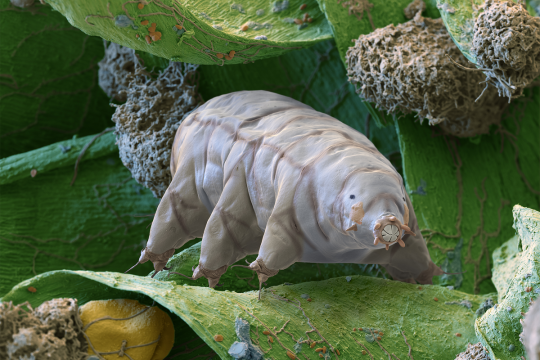
(Image: an electron microscope image of a tardigrade standing on a bit of plant matter. This one has a closed mouth with a ring of triangular tooth-like structures. It also has two simple eyes that look like black dots. End ID)
The name "tardigrade" means "slow walker", which is fitting as, despite their eight legs, tardigrades have a slow and awkward gait. This is the result of their legs being unjointed, only able to pivot at their connection to the body. Their gait has been compared to that of bears, hence why they are often called water bears and their discoverer, Johann August Ephraim Goeze, called them "kleiner wasserbär", meaning "little water bear". Tardigrades are found worldwide and have inhabited virtually every habitat, from the tops of mountains to the deep sea, from hot springs to the antarctic, from freshwater to saltwater. The one thing they have in common is a need to stay wet. Tardigrades can survive out of water as long as they can stay moist and are often found in mosses, hence another common name: moss piglets. The majority either eat plants or bacteria, but some will feed on smaller tardigrades or other micro-animals. Their famous survivability makes it easy for tardigrades or their eggs to be carried to new habitats by larger animals or other phenomena. Tardigrades are one of the first micro-animals to colonize a new habitat and they are a pioneer species, the first species to colonize a new environment and whose presence makes that environment fore suitable for other species to follow. Tardigrades are a major food source to other micro-animals and larger organisms. Most species have distinct males and females, though a few reproduce through parthenogenesis. In most cases, molting female will lay her eggs in her shed cuticle and males will them fertilize them. Other species have a form of internal reproduction. Males and females will court each other before mating and females will usually allow multiple males to fertilize her eggs. Female tardigrades are typically larger and more abundant than males. Eggs can take up to 14 days (species dependent) before hatching. All tardigrades of the same species have the exact same number of cells as each other. They are also born with the same number of cells they will have as an adult. Their growth is driven by enlargement of the existing cells rather than cellular reproduction making new cells. The lifespan ranges between a few months to a few years, depending on species.

(Image: a color photo of a tardigrade. It is a pale, translucent white, making it hard to make out details. Its body is curved, with the front end pointing at the camera. It has two simple eyes. End ID)
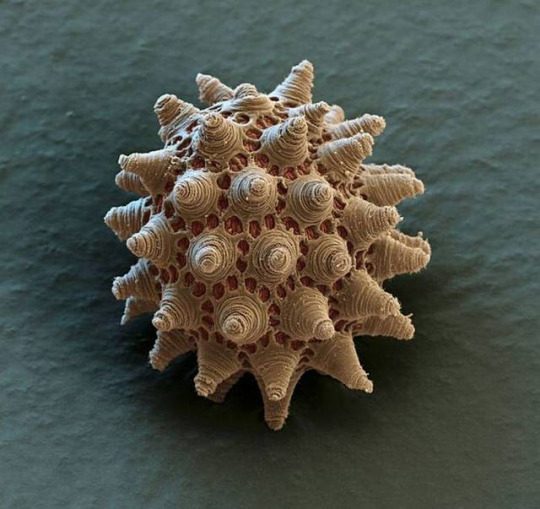
(Image: an electron microscope image of a tardigrade egg. It is round but covered in small pores and conical structures. End ID)
The most famous feature of tardigrades is their legendary durability. It is commonly said that tardigrades can survive just about anything (except for the things that are actually trying to kill them. They are prey to a lot of species after all). Among the things they can survive is extreme heat, extreme cold, dehydration, extremely high and low pressure, exposure to ionizing radiation (that's the scary kind), low oxygen environments, environmental toxins, heavy impacts, and the vacuum of fucking space. While the can survive in extreme conditions, tardigrades are not considered extremophiles. True extremophiles thrive in extreme environments and are negatively impacted by leaving them. Tardigrades can survive in extreme environments, but are negatively impacted and can't survive as well there as they can in less extreme places. The main trait that has allowed tardigrades to survive all five mass extinctions in history is cryptobiosis. Cryptobiosis is the rare ability for an animal to enter a state of dormancy where their metabolic processes come to an almost complete stop. While in cryptobiosis, metabolic activity drops to 0.01% normal and water content drops to 1% normal. In this state, the tardigrade is called a tun. Tardigrades usually enter cryptobiosis in response to arid conditions. One experiment showed that a species of tardigrade could last for at least 30 years in this state and return to normal lifestyle functions when exposed to water. Tardigrades will also enter cryptobiosis in response to low oxygen, toxic chemical exposure, increased or decreased temperature, and excessive salt content in the water. Tardigrades also show extreme resistance to both high and low pressure. They can live in 0 atmospheres of pressure and some species can survive up to 6,000 atmospheres, more than double the pressure at the bottom of the Marianas trench. More interesting is their ability to survive dangerous radiation. They can survive 1,000 times the dose of gamma radiation that humans can. Early tests focused on tardigrades in cryptobiosis and concluded that the extremely low water content of a cryptobiotic tardigrade doesn't leave much opportunity for the radiation to react with the animal. However it was later found that active and fully hydrated tardigrades are still considerably resistant to radiation. Studies into this resistance indicate that tardigrades can very efficiently repair damaged DNA and have unique proteins called Dsup that provides additional protection. Dsup introduced to human cells has provided additional protection against x-rays.
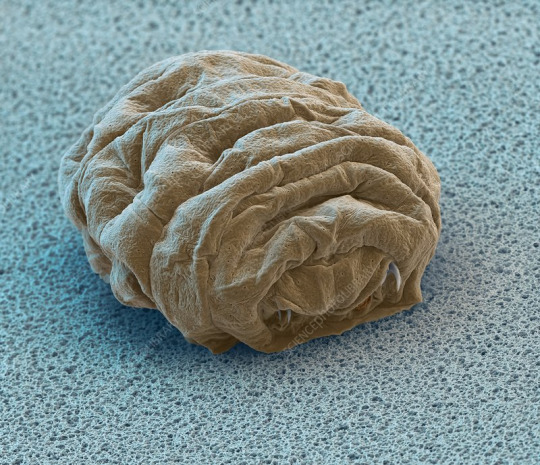
(Image: an electron microscope image of a tun - a tardigrade in cryptobiosis. It is smaller and very wrinkly, with the legs and mouth retracted into the body. End ID)
Tardigrades were the first animals to be exposed to the vacuum of space. They were exposed for 10 days, some in a state of cryptobiosis at the time of exposure and some still active. It was found that they were able to survive the vacuum when shielded from the sun's ultraviolet radiation, with those already in cryptobiosis doing better. Upon being rehydrated, many were able to resume normal life functions and successfully reproduce, though others died after being rehydrated. Those that were exposed to UV radiation fared much worse, with only a few hydrated individuals surviving. The individuals in cryptobiosis had a lower survival rate when exposed to UV than those not exposed to UV and were less successful at reproducing afterwards. Studies of tardigrade's space survival abilities and resistance to radiation could go a long way in helping human space travel. One of the largest dangers of space travel is that space is full of nasty radiation from the sun that Earth's magnetic field protects us from. Some scientists speculate about the possibility of accidentally seeding other planets or moons with tardigrades or other space-resistant organisms. This is a problem because introducing Earth life to other world has the potential to damage any native ecosystems and if we find life in space in the future we don't want to have to figure out if it's something we accidentally put there. While tardigrades could likely survive on other planets, they would eventually die without a food source. Some sources reported that tardigrades may have colonized the moon after an experiment with them crashed. Unfortunately, the moon is not crawling with tardigrades now. It's way too dry for them to exit cryptobiosis even if they survived the crash, which they probably didn't.
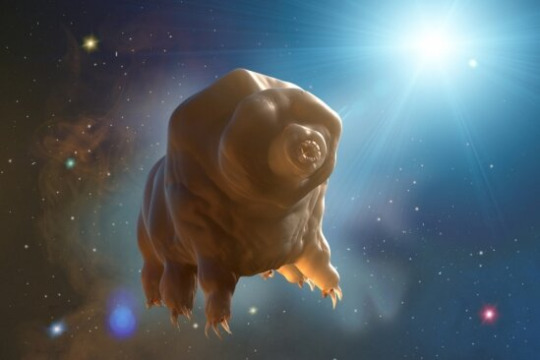
(Image: art of a tardigrade floating in the vacuum of space. End ID. Source: University of California - Santa Barbara)
#wet beast wednesday#tardigrade#water bear#moss piglet#micro animal#microbiology#marine biology#biology#zoology#ecology#animal facts#informative#science#space#astrobiology#radiation#cryptobiosis#tun#image described
156 notes
·
View notes
Text
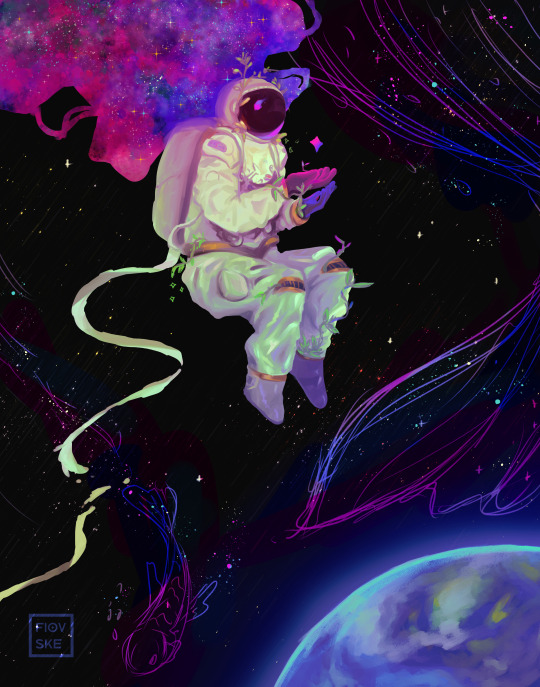

cosmic swimmer
#art#space#astronaut#whales#fishes#marine biology#astronomy#are two ends of the vast unknowns spectrum#stars#adding to the 'whales belong in the sky' agenda#fiovske draws#a personal piece.. after so many years..
1K notes
·
View notes
Text
found a galaxy in a fishtank


470 notes
·
View notes
Text
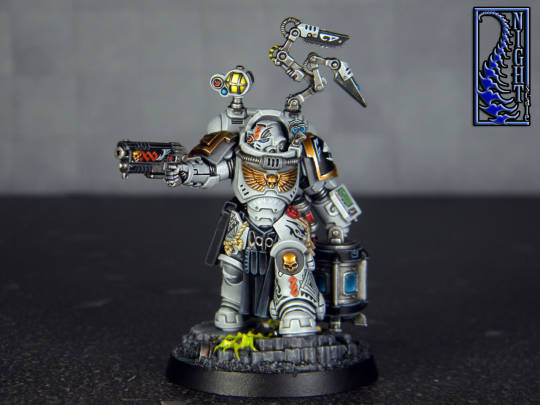









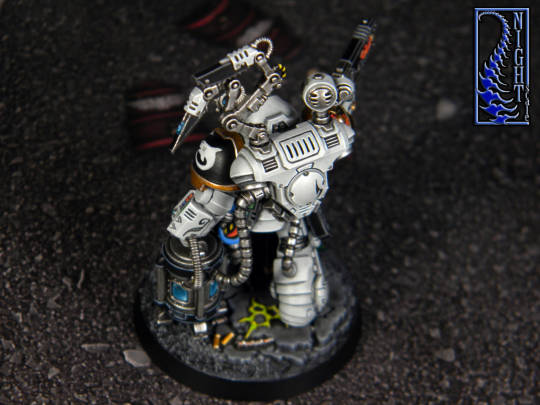
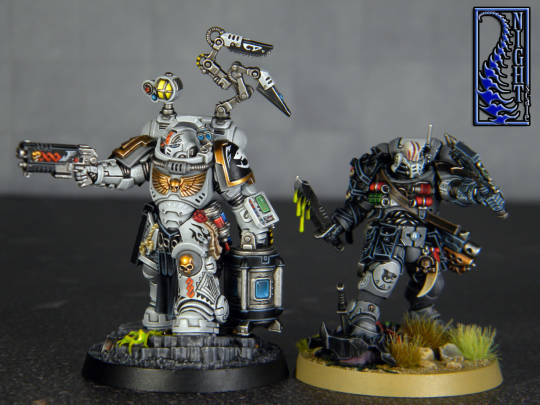
Carcharodon Apothecary Biologis.
You can find a tutorial on Carcharodon Apothecary on our Patreon.
https://www.patreon.com/Nightscalestudio
#nightscalestudio#space marine#space marines#apothecary#Apothecary Biologis#primaris#carcharodons astra#carcharodon astra#carcharodons#warhammer#warhammer40k#warhammer40000#miniaturepainting#paintingminiature#painting comission
77 notes
·
View notes
Text
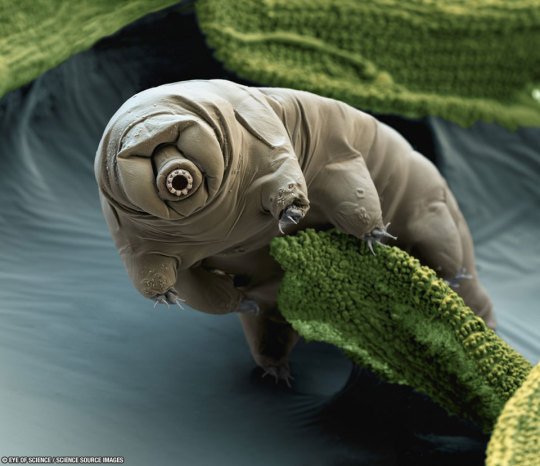
Is this an alien? Probably not, but of all the animals on Earth, the tardigrade might be the best candidate. That's because tardigrades are known to be able to go for decades without food or water, to survive temperatures from near absolute zero to well above the boiling point of water, to survive pressures from near zero to well above that on ocean floors, and to survive direct exposure to dangerous radiations.
The far-ranging survivability of these extremophiles was tested in 2011 outside an orbiting space shuttle. Tardigrades are so durable partly because they can repair their own DNA and reduce their body water content to a few percent. Some of these miniature water-bears almost became extraterrestrials in 2011 when they were launched toward to the Martian moon Phobos, and again in 2021 when they were launched toward Earth's own moon, but the former launch failed, and the latter landing crashed.
Tardigrades are more common than humans across most of the Earth. Pictured here in a color-enhanced electron micrograph, a millimeter-long tardigrade crawls on moss.
📷: Nicole Ottawa & Oliver Meckes / Eye of Science / Science Source Images
#science#tardigrades#biology#marine biology#animals#ScienceAcumen#astronomy#news#astronomy news#universo#space science#space exploration#space#research#outer space
241 notes
·
View notes
Text

Silurian seas | Oceanos Silurianos
🇬🇧
The Silurian Period also marked a critical phase in Earth's history with significant developments in marine life. During this period, marine environments witnessed the diversification of invertebrates, including prominent groups like brachiopods and trilobites. Jawed fish, both cartilaginous and bony, emerged and began to dominate marine ecosystems. Graptolites, cephalopods such as nautiloids, and reef-building organisms like corals were prevalent. Sea scorpions (eurypterids) were notable marine arthropods.
The Silurian experienced global sea level changes, influencing the distribution and diversity of marine life. These marine ecosystems set the stage for further evolutionary events, laying the groundwork for the subsequent Devonian Period and the rise of more complex marine life forms.
🇧🇷
O Período Siluriano também marcou uma fase crucial na história da Terra com desenvolvimentos significativos na vida marinha. Durante esse período, os ambientes marinhos testemunharam a diversificação de invertebrados, incluindo grupos proeminentes como braquiópodes e trilobitas. Peixes com mandíbulas, tanto cartilaginosos quanto ósseos, emergiram e começaram a dominar os ecossistemas marinhos. Graptólitos, cefalópodes como nautiloides, e organismos construtores de recifes como corais eram prevalentes. Escorpiões-do-mar (euripterídeos) eram artrópodes marinhos notáveis.
O Siluriano experimentou mudanças globais nos níveis do mar, influenciando a distribuição e diversidade da vida marinha. Esses ecossistemas marinhos prepararam o terreno para eventos evolutivos subsequentes, estabelecendo as bases para o período Devoniano e o surgimento de formas de vida marinhas mais complexas.
#science#paleontology#geology#paleobotany#universe#biology#earth#digital painting#space#artwork#silurian period#paleozóico#paleobotânica#paleozoic#paleontologia#paleoart#arte digital#original art#artists on tumblr#art#digital art#my art#sea#ocean#marine biology#marine life
25 notes
·
View notes
Text
Protip: If you ever get burned out on the awfulness of the world, try to imagine it filtered through the perspective of a bronze age peasant
We live in an age of wizards, where even the poorest beggars are lettered scholars, and the violet robes of kings can be bought with a few hours of a commoner's daily wage. Steel horses gallop past on hooves made of tree gum, upon stone roads that rise into sky like tangled ribbons or nests of snakes.
Near every man, woman and child owns a magic mirror of polished obsidian. It feeds them with visions and songs of distant lands and times, and carries within a library greater than that of alexandria. and they are only the product of a thousand other wonders. Its face is made of crystal orbs which glow like the sun, shone through rubies emeralds and sapphires that are said to flow like liquid while still a gem. Its brain is a magic circle made of polished copper, decorated all around with lightning runes carved in tiles of clay. They say these eat lightning released by burning dragon bezoars and blood, or from metals from tartarus that radiate hellfire and plague
There are other lands beyond here the likes of which can't be fathomed. Though they are distant they must be seen to be believd.
beneath the waves lies a world both beautiful and dying. In cities of coral the octopodes live, using magic to take the forms of forests, fish and sand. There are deep valleys where darkness weighs as much as a mountain. Hideous monsters dwell in this darkness, using dim lights to spring their trap. The gods of the fish drift across the sky of this world. To approach when they are singing causes one to die and stream blood from their ears. When gods do die their titanic corpses rain from the heavens, and from their flesh the fish carve their cities
Off in the south their is a great sea of trees, it is a vast battlefield both above and below. In one men lead menageries of of steel beasts to carve away at this ocean, bearing swords powered by dragon blood which have grown sharp, gnashing teeth. beneath their feet tiny battle companies of six-legged men ride battle each other in black plate armor, and use not swords but their fangs. These tiny soldiers are said to have no minds of their own. instead a queen thinks for them, and leads them to fight with her perfumes
There are still farther lands men have not yet seen among the stars. celestial spheres of endless skyies that rain diamonds and acid and rivers of metal rush molten unbidden through dead worlds, and great clouds sparkle, in colors human eyes cannot see
This world is horrible, wonderful, awful and beyond description. One only needs to remember it for the wonder that it is.
#fantasy#magepunk#bronze age#retrofuturism#marine biology#whales#ants#computers#electronics#wizardposting#space#astronomy
229 notes
·
View notes
Text
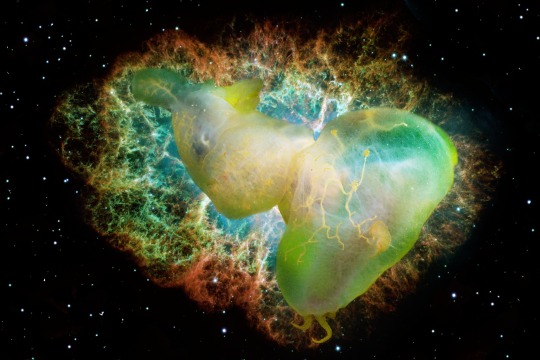
Melibe leonina, The Lion's Mane Nudibranch, swims past the Crab Nebula
I got to photograph this sea slug over the summer at a local marine lab, and I just felt there was so much color and texture that reminded me of a nebula, I had to put it in space. The background image is of the Crab Nebula. It makes me really happy to put together my love of space and the ocean.
Side note: Melibe nudibranchs smell really good. Like cucumber and watermelon and a little bit citrus.
Photo Credit: my nudibranch photo with background adapted from an image taken with the Hubble Space Telescope, with credit to NASA, ESA and Allison Loll/Jeff Hester (Arizona State University) and acknowledgemnt to Davide De Martin (ESA/Hubble). All editing and compilation done by me. High res prints available here
#nudibranch#sea slugs#marine biology#space#sea creatures#crab nebula#Melibe leonina#my marine life photos#astrophotography#space x ocean#ocean#sea life#marine life#my photography
38 notes
·
View notes
Text
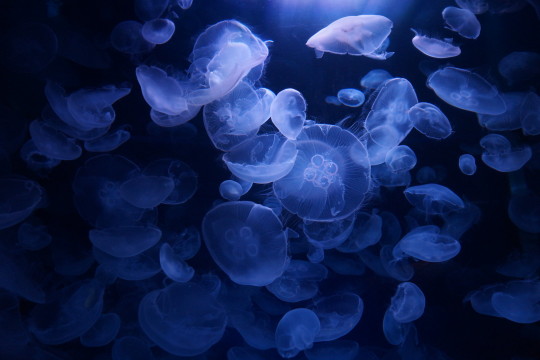

earth fact time. in 1991, nasa launched about 2,500 moon jelly polyps into space. they wanted to see how developing in zero-gravity would affect jellyfish behaviour back on earth. by the end of the mission, there were about 60,000 jellyfish orbiting earth - they'd gotten BUSY up there.
essentially, the way humans tell which way is up and which is down is a bunch of tiny crystals on a bunch of tiny hairs in our ears. the crystals roll around and move the hair cells, which signals directions to our brain. jellyfish have similar crystal-hairs around their bells (the umbrella-looking bit), so knowing how jellyfish responded to 0G development would help us figure out how humans would do in a similar scenario!
results found that, once returned to earth, the moon jellies had trouble getting around. they had vertigo and couldn't tell up from down, and sort of looked drunk, if moon jellies could get drunk. doesn't bode too well for us, i think.
NOVA | the atlantic | jellyfishart.com
photos: ume-y (flickr) | akron zoo
#long fact for you guys today! but a very interesting one imo#aquatic#earthposting#facts!#invertebrates#cnidarians#jellyfish#moon jellies#moon jellyfish#marine biology#zoology#biology#marine life#marine animals#sea creatures#sea animals#sea life#nasa#outer space#space exploration#earth fact no. 23
26 notes
·
View notes
Text
It's really charming to me that the horns Chaos Space Marines like to grow, and the tusks CSM terminators have, are both male secondary sex characteristics. They're out there displaying how what good mates they are, and I love that for them.
#obligatory biology is more complicated than that#don't care it's sexy is what it is#let them lek#chaos space marines#warhammer 40k
147 notes
·
View notes
Text
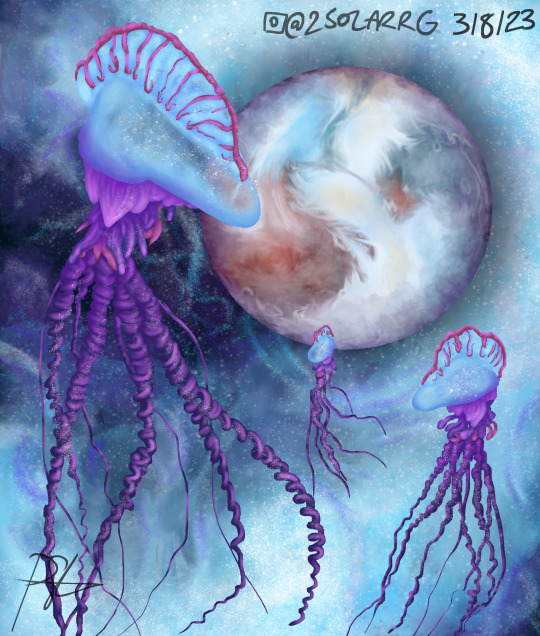
This is something I made in August (under a different alias lol, the name is my Instagram which is now called CannDesignz!).
I won't be posting on this account very often, only if I draw something which is usually just when I get a whim to.
I used Krita and it took roughly 3 hours!
I was inspired by Astrology and Marine Life, so I thought to put them together. The 3 weird octopus creatures are actually called Man'O'Wars! They aren't single organisms, I believe they're actually a kind of siphonophore!
The planet is Pluto, which represents transformation, death, karma and rebirth in Astrology.
~
Check out my Astrology Blog!
#digital art#digital illustration#digital painting#artwork#artists on tumblr#my art#portuguese man o war#marine life#marine biology#pluto#astrology#astronomy#outer space#kritaart#krita#illustration#illustrator
21 notes
·
View notes
Text

Oh to study on the floor
#studyblr#study notes#uniblr#university#uni#uni student#chaotic notes#chaos space marines#studying on the floor#chaotic table#ahhhhh#biology#biology notes#oh no
15 notes
·
View notes
Text
Variants on knight class living armor.

For the armies of the far future the most powerful types of armors are full body pieces of living armor. Muscles holding up plates of heavy steel, a similar priceable to previous generations of power armor, but far more graceful and powerful. These pieces of armor are living beings, often even being capable of making small adjustments to themselves for extra protection, and giving information to wearer.
These are examples of Knight Class armor. A species of living armor popularized for its sleek design, and for its associations with its owners: the Knights of Mons, the secret police and elite shock troops of the Republic of Olympus Mons. These are the six most common variations on this armor.
Top left- Knights' Armor: the armor of the Knights of Mons that popularized it. The design and colors are designed after their ancient military uniforms. They're also the ones who popularized the use of shields and Tsar rifles being used with the armor.
Top middle- Shock armor: paler less ornate versions of the armor, used by the knights on missions that require stealth. Infamous for their use in the Tharsis campaigns.
Top left- Phobos kingsgaurd armor: Ornate armor used by the royal guard of the kingdom of Phobos and Deimos. These guards are trained as Knights and gifted by Mons to Phobos. They're thought to be more loyal to Mars then they are to its ally of Phobos, being accused of killing at least two kings whose choices would have been bad for Mons.
Bottom left- Gia export armor: The armor given to the Knights of Mons when they fight alongside Mons's ally of the Gia Union. As the Gia Union is uncomfortable with the concept of an ally and demands its soldiers all wear pure white cloth and pure chrome metal, allied troops wearing greens would stick out poorly.
Bottom middle- Repentance armor: The armor worn by those who have transgressed against Mons's moral order and seek to redeem themselves by fighting alongside the Knights. These soldiers tend to be political prisoners or prisoners of war, whose only other option would be death or worse.
Bottom right- Umbral armor: The Umbral legion is a vast network of revolutionary insurgents and fighters across the inner worlds. As they are taken from every army, occasionally treasonous Knights fight for them. Their armor is modified to take the Umbral symbol of the serpent, and a dark color pallet.
#speculative biology#speculative fiction#196#my art#my artwork#my worldbuilding#worldbuilding#science fiction#sci fi#sci fi art#science fiction art#speculative evolution#speculative zoology#power armor#super soldier#space marines#my writing#writing#lore#mars#cyberpunk#my artwrok#autistic artist#dystopia#space fantasy#science fantasy
17 notes
·
View notes
Text
My mum and I were discussing how to explore the Mariana Trench safely and she's trying to figure what they'd need to do to build a submarine or spacesuit esque diving suit to go down there safely without imploding
My suggestion however, is genesplicing or whatever it's called, we get the octonauts (fuck you) and we splice them with octopus or jellyfish DNA, now
My mother thinks that angler fish is ideal for this, but angler fish have bones, and a creature with bones has a lower limit, it will eventually reach a point where there is too much pressure and it's meatsuit compacts and crushes it's skeleton into dust
Personally I think we need to remove the bones from the equation, make the octonauts as goopy as possible, but, maybe make the bones removal so they can surface without blobfishing
Marine biologists please weigh in I want to hear your thoughts
#marine biology#octopus#jellyfish#angler fish#octonauts#fuck you im calling them octonauts bc we call space explorers astronauts
37 notes
·
View notes